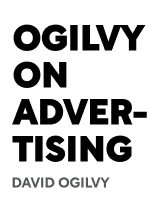

This article is an excerpt from the Shortform book guide to "Ogilvy On Advertising" by David Ogilvy. Shortform has the world's best summaries and analyses of books you should be reading.
Like this article? Sign up for a free trial here .
Do you want to know how to use market research? How can you use research to learn about the market and create ads?
Using market research can help you do more than make ads. Knowing how to use market research can make you more likely to convince people to take up your ideas, and can help you formulate strategic ideas.
Read more about how to use market research and what it can mean for you.
How to Use Market Research
Research not only helps you create good marketing and advertising—it can also help you win arguments. For example, when Ogilvy was working with British Travel, the chairman wanted to feature trout fishing in a tourism ad. Ogilvy got him to change his mind by showing him research that had determined American tourists weren’t interested in trout fishing in the slightest.
Sometimes, however, people can be resistant to research, particularly if they don’t like what it says. (For example, one of Ogilvy’s clients spent $600,000 developing a product before having research done. Research revealed that the target audience wasn’t interested. The client called Ogilvy a “dry hole” and left the meeting). You can make research look more official and weighty by involving a graphic designer and printing a hard copy of the report rather than sending a typewritten memo listing the findings.
Finally, sometimes research falls victim to confirmation bias—people only pay attention to the research that supports their existing position.
So how do you know how to use market research? Let’s find out.
Effective Surveying
Much marketing and advertising research comes from surveying, and there are three things to keep in mind to get accurate results:
Consideration #1: Sample Sizes
In some cases, small samples and ballpark findings are all you need. (Shortform example: If you want to know how many people understand the word “pyrrhic,” if the first five people you ask don’t, you’ve got your answer—you don’t need anything statistically significant to determine that you should choose a more common word.)
In other cases, particularly for trends, you do need large samples, strict methodology, and statistically significant results. This is an important part for how to use market research.
Consideration #2: Dishonesty
Some interviewers don’t like talking to strangers and instead fill out the surveys themselves. Other times, respondents lie to interviewers. To manage the second problem:
1. Ask a potential interviewee a question to judge their honesty.
- For example, Ogilvy always asked people what they’d rather hear on the radio, a Shakespeare play or Jack Benny. Anyone who answered Shakespeare wasn’t interviewed because she was likely a liar.
2. Frame the question in a way that doesn’t prompt a particular response.
- For example, when Gone With the Wind became a bestselling book, it was difficult to find out how many people had read it because almost everyone who was asked said yes because it was embarrassing to admit they hadn’t read it. Asking people if they planned to read it, however, made the results more accurate—anyone who answered that they planned to read it hadn’t already done so, and the people who had read it would say so.
Consideration #3: Children
Children can be difficult to survey and include in research because they don’t understand complicated questions, have trouble speaking articulately, and tend to give you the answer they think you want. But learning how to use market research to address them can help. There are three ways to more accurately get their opinions:
1. Use games. Show a commercial to children, and then ask them to play games that demonstrate what they understood from it. For example, ask them to act like the characters in the commercial or describe the commercial on a toy telephone. This will help you find out what they thought the commercial was trying to say and what they liked or disliked about the characters.
2. Compare the product and commercial. Show a commercial to children, and ask them what they liked about the product. Then, show them the physical product, and ask what they like. If the answers are wildly different, you probably have a communication problem.
- (Shortform example: Say you show children a water gun commercial and 10% of them say they like how far the gun can shoot. When actually given the gun to play with, 70% of them like how far it can shoot. Your commercial isn’t effectively communicating this attractive feature.)
3. Circle test. Give children a piece of paper that shows four toys and get them to circle the one they want. Then, show them your commercial. Then, tell them some children forgot to put their names on the first piece of paper, so you’d like them to redo the circling. If your product is circled more the second time, then you know your commercial is persuasive.
Now that you know how to use market research, you’ll have a better sense of how to conduct and apply research.

———End of Preview———
Like what you just read? Read the rest of the world's best book summary and analysis of David Ogilvy's "Ogilvy On Advertising" at Shortform .
Here's what you'll find in our full Ogilvy On Advertising summary :
- What the "father of advertising" has learned from his decades' of experience
- How to craft easy-to-understand ads that work
- The 6 pioneers of the advertising industry






